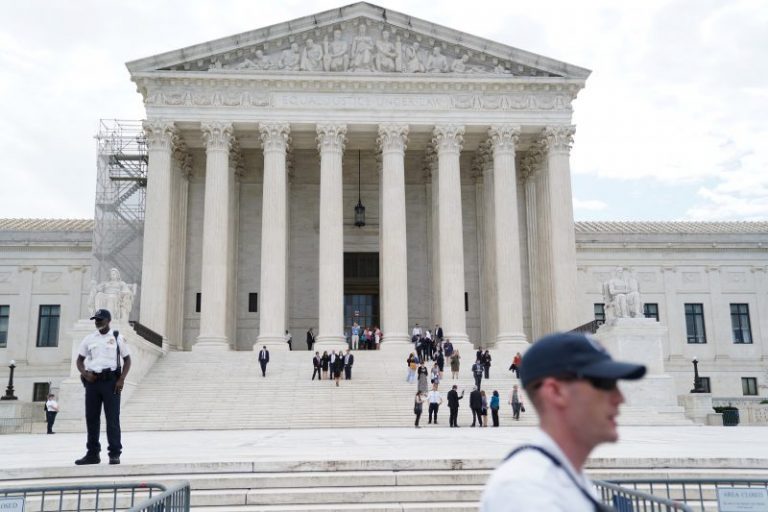
Politics is about power. In the United States, it is often about determining who will wield power — who will serve as mayor or who will get to nominate people to the Supreme Court. The mechanism we use to allocate that power is elections, granting people the opportunity to weigh in on who should have the power included in a position.
This is democracy — but it isn’t that simple. Not all people get to weigh in, for one: kids don’t and, in most places, noncitizens don’t and, in some places, convicted felons don’t. But, perhaps more important, one of the powers allocated to elected officials is the power to set up and run elections themselves. Elected officials have the power to decide how officials are elected, which, when stated like that, makes the potential for abuse very, very obvious.
One way in which that abuse manifests is a way we by now simply take for granted. Congressional and state legislative districts are drawn to benefit one party or the other, a scheme that occurs often enough that we all know the word for it. When the majority in the U.S. House holds a 10-person edge, skimming a seat or two from the opposition in a handful of states can determine how an awful lot of power is wielded.
Such efforts are complicated by the overlap of party and race. Black Americans were for decades prevented from fully participating in elections; the passage of laws such as the Voting Rights Act (VRA), aimed at ensuring the franchise for Black voters, helped reinforce the overwhelming support Black voters have for the Democratic Party. That relationship, though, also means that red states with large Black populations — like much of the South — can dilute Democratic power by diluting the votes of Black residents.
Earlier this month, the Supreme Court surprised observers by determining that congressional maps drawn in Alabama should be considered invalid. Alabama had argued that it was adopting a race-blind approach to drawing districts, one that resulted in one heavily Black district out of seven in a state where 1 in 4 residents are Black. The court, in an opinion written by Chief Justice John G. Roberts Jr., determined that this violated the VRA.
That decision was unexpected, particularly coming from Roberts. In 2013, he authored an opinion effectively removing the VRA’s requirement that certain jurisdictions with histories of anti-Black discrimination have new voting laws approved by the federal government. In 2021, Roberts joined the majority in further weakening the voting protections that law offered, particularly the anti-discrimination components of Section 2.
The Alabama decision wasn’t a function of the risk to Black Alabamians, as such. Instead, Roberts rejected the state’s position as an “attempt to remake our Section 2 jurisprudence anew.”
“The concern that Section 2 may impermissibly elevate race in the allocation of political power within the States is, of course, not new,” Roberts added. “Our opinion today does not diminish or disregard these concerns.”
This tension between the state and the court overlapped with another decision released on Tuesday. In Moore v. Harper, the court — with Roberts again writing the opinion — decided that the “independent state legislature” theory espoused by Republicans in recent years did not hold. The court determined that state legislatures did not have an unfettered ability to determine how elections are run in their states but, instead, are subject at least in part to oversight from the judicial branch.
“The Elections Clause [of the Constitution] does not insulate state legislatures from the ordinary exercise of state judicial review,” the opinion read. Challenges to the drawing of legislative boundaries or other election-related determinations could continue.
In a relatively narrow sense, the rejection of this theory was a dual victory for democracy and the fair allocation of power. The most obvious sense is the one at issue in the case. North Carolina drew boundaries seen as unfairly benefiting Republicans and a state court ordered the lines to be redrawn. The Supreme Court case upheld that decision.
By rejecting the “independent state legislature” theory, the court also effectively answered a what-if from the 2020 election. Then, Donald Trump sought to retain the power of the presidency by having state legislatures use contrived rationales to declare that the results in their states were invalid. He pushed Vice President Mike Pence to use the counting of electoral votes on Jan. 6, 2021, to send results back to legislatures which — Trump and his attorneys argued — were empowered by the Elections Clause to decide who actually won, regardless of the certified votes.
Retired conservative judge J. Michael Luttig, a staunch critic of Trump, viewed this idea as a point of weakness in the system. In early 2022, he wrote an essay for CNN arguing that an appeal to the “independent state legislature” theory was a still-viable mechanism for a losing presidential candidate to nonetheless gain power.
“Trump and the Republicans can only be stopped from stealing the 2024 election at this point if the Supreme Court rejects the independent state legislature doctrine (thus allowing state court enforcement of state constitutional limitations on legislatively enacted election rules and elector appointments),” he wrote at the time. In essence, that’s what the decision released on Tuesday does. The court has changed only slightly since early-2001, suggesting that, had Pence gone along with Trump’s plan, the court would not have legitimized the effort — though the decision was not unanimous.
Framing Moore v. Harper and the Alabama decision, Allen v. Milligan, in the context of the accrual of power is important. In each case, states sought to bolster the power of the Republican Party in how they drew congressional lines. They sought, in other words, to use gerrymandering to tilt the balance of power in their favor. In each case, those efforts were rejected, but for different reasons.
In Allen, it was because the VRA still has functional components that the court has upheld. In Moore, it was because the court believed that the legislature was still accountable to the judiciary. In each case, in other words, democratic power allocation was defended in part because the Supreme Court sought to protect the power of state and federal judges.
The ideal of democracy is that voters are presented with candidates and choose between them to optimize representation. In practice, particularly in a complicated era with a historically large population, there are constraints and impositions on how that works. On Tuesday, the Supreme Court ruled against allowing state legislators to impose new constraints without judicial review, thereby offering some protection — though with unclear boundaries — for the process of power allocation.
In part, they did so to protect their own power. Time will tell if protecting the power of groups of voters will prove to be similarly compelling.


Comments are closed.